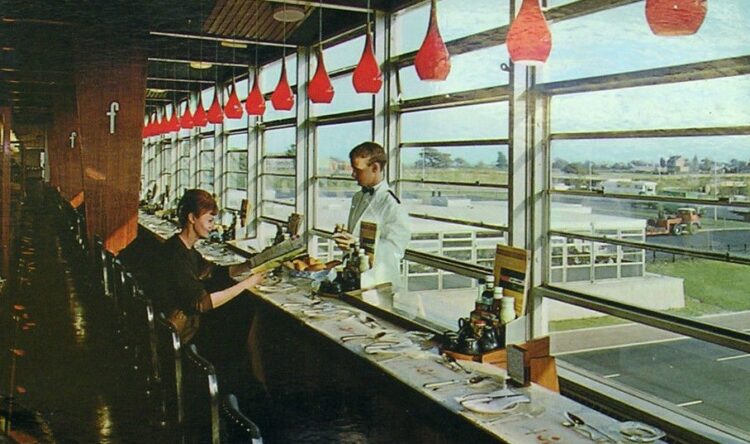UK firm launches fuel cell charge point for electric cars – but will hydrogen power our electric dreams?
British firm AFC Energy has launched the first ever hydrogen fuel cell electric vehicle charger, a system it describes as a “breakthrough” in clean mobility
By using hydrogen fuel cells to recharge battery-electric vehicles in car parks and service stations, the system will help bridge the growing gap between electricity need and generation capacity caused by a projected rise in EV uptake. The modular, low-cost charger also solves some of the logistical issues currently associated with electric car charging, and can even operate entirely off-grid. It’s a completely different model to our current use of hydrogen in mobility, in that the vehicles themselves are BEVs rather than FCEVs, and could be deployed extremely rapidly.
“The UK government has targets for electric vehicle uptake, aiming for 100 percent of new cars to be zero-emission by 2040,” says Adam Bond, CEO of AFC Energy.
“The additional power required is somewhere around 27 gigawatts. That’s 17,000 wind turbines; one hundred London Arrays. It is enormous power that hasn’t been considered within the context of the policy on EV charging.
“It is one thing to stick a couple of EV charger points on the motorway, but that is not going to deliver the policy. What we are trying to do is take from government or industry the need to create another 20 gigawatts of power, and displace that with localised, decentralised, standalone clean energy solutions that will operate 24/7, as and when you need them.”
The ‘CH2ARGE’ system developed by AFC Energy is beguilingly straightforward. An alkaline fuel cell (or set of fuel cells) is connected to an inverter and a battery, via which it can charge electric vehicles using a CHAdeMO DC fast charger. It can switch on and off as required, putting any ‘spare’ electricity into its battery for later use, or exporting it to the grid.
It’s a clean, efficient, scalable and practical solution to an expanding set of challenges. What’s more, it can be built into a shipping container for quick and cheap deployment almost anywhere. The system is designed to operate on-grid, off-grid, or “near-grid”, opening up the benefits of hydrogen power to a completely new range of consumers. But where does the actual hydrogen come from?
“You could take it in from an industrial gas company in cylinders,” said Bond. “The infrastructure and logistics are already in place, so you could have that tomorrow. You can look at green ammonia; you can crack ammonia in to hydrogen and use that hydrogen to run your fuel cell. Or you can look at using surplus renewable energy using an electrolyser, which is the Scottish model.
“But they are the mainstream options. The hydrogen generation market is exponentially bigger than that in terms of the tech that is coming through, and we are positioning ourselves to access some of these upstream hydrogen generation techniques that will remove a lot of the cost from the conventional methods. Fundamentally you can create hydrogen in ways that are not currently done commercially, at costs that are lower than what is on the market today.”
Producing hydrogen for these large, static fuel cells is already a bit cheaper anyway. Compared to the ultra-efficient technology found in hydrogen-powered vehicles, the fuel cells produced by AFC Energy are significantly less fussy about the quality of the gas they use.
“We can accept a lower grade of hydrogen than a lot of other fuel cells,” explains Bond. “Those fuel cells in cars that require ultra-high purity – we don’t need anywhere near that level, so it is a lower cost.”
While a hydrogen fuel cell emits only pure water and heat ‘at the tailpipe’, the overall environmental cleanliness of the ‘CH2ARGE’ system will depend partially on the source of the hydrogen it consumes. Gas-derived hydrogen has a greater carbon footprint than wind-generated hydrogen, for example. But one source AFC Energy is exploring is vented hydrogen, waste gas released into the atmosphere as a byproduct of certain industrial processes. This, says Bond, could prove to be an important supplier in future.
“The chlorine industry creates about 100,000 megawatts of power equivalent in vented hydrogen. The same industry consumes roughly two to three percent of the world’s power. Why aren’t we converting that hydrogen into electricity? There are refineries around the world that we have looked at that could take that hydrogen surplus and power their entire refinery. That is just one market.”
Mobility is one of several applications for AFC Energy’s fuel cell technology. Many industries are still reliant on diesel generators to supply power to work sites and remote operations; hydrogen fuel cells offer a zero-emission alternative that hasn’t been available before. But car charging is one area where the need for change is most pressing.
“I think the University of Melbourne calculated that five billion dollars needs to be spent in the UK over the next five years to keep up with the EV charging curve,” says Bond. “As you grow that number of cars, there will be challenges for the grid. It isn’t a problem now, but we are talking 2020, 2030, 2040 targets, which will be very different.”
With electric car owners currently reliant on unpredictable and impractical public charging networks (or owning a private driveway) any move towards a sustainable, decentralised system of EV charging is welcome. But the ‘CH2ARGE’ product, which AFC Energy expects to deploy commercially within the next 12 months, could help answer some of the more fundamental questions raised by our electric dreams.
For more news and features on hydrogen mobility, please click here, or sign up to the Telegraph Cars newsletter.




